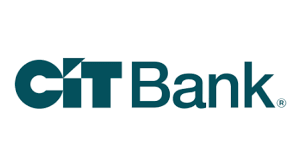Experts say that you should aim to set aside six months’ worth of living expenses in an account that is designated specifically for emergency use. This is money intended to cover your expenses if you lose your job, or to pay for large, unexpected bills such as emergency home repairs or medical costs.
One common question savers have is where the best place to put their emergency savings is. Should you put it in a savings account, or is a CD a better place to maximize the yield from this idle cash? In this article, we’ll explore the pros and cons of each option to help you make the best decision.
Are you looking to establish an emergency fund or simply get more interest income from the one you already have? Click here for our up-to-date list of the best high-yield savings accounts right now.
Savings account vs. CDs
The short answer is that the best choice for your emergency savings is usually a savings account, but it isn’t quite as black and white as it might seem.
Our Picks for the Best High-Yield Savings Accounts of 2024
|
American Express® High Yield Savings 
APY 4.00%
Rate info
Member FDIC.
|
APY 4.00%
Rate info |
Min. to earn $0 |
|
Capital One 360 Performance Savings 
APY 4.00%
Rate info
Member FDIC.
|
APY 4.00%
Rate info |
Min. to earn $0 |
|
CIT Platinum Savings 
APY 4.55% APY for balances of $5,000 or more
Rate info Min. to earn $100 to open account, $5,000 for max APY
Member FDIC.
|
APY 4.55% APY for balances of $5,000 or more
Rate info |
Min. to earn $100 to open account, $5,000 for max APY |
For one thing, CDs aren’t nearly as untouchable as many people believe. It isn’t that you can’t take money out of a CD before it reaches maturity — you’ll just pay a penalty if you do. And it might not be as much as you think. In most cases, you’ll simply forfeit a few months’ worth of interest (60 or 90 days of interest is common with 1-year CDs).
As an example, if you have $5,000 in a 1-year CD at a 4.25% APY, and there’s an early withdrawal penalty of 60 days of interest, it would cost you less than $35 to get your money out early. Of course, paying this fee still isn’t a good thing, but the point is that tapping into your CD early isn’t the end of the world.
The biggest argument against using a CD
If interest rates were forecast to fall rapidly over the next year, it could seem worth risking an early withdrawal penalty to lock in the current rates. To be clear, there’s certainly no guarantee that interest rates will behave in any certain way over a period of time in the future. But in a falling-rate environment, the math of using a CD can make sense in some cases.
The bigger issue is that there is usually no such thing as a partial withdrawal from a CD. In other words, if you have a $10,000 emergency fund and you need to withdraw $2,000 to cover an unexpected expense, you would need to withdraw the entire $10,000 balance if it were held in a CD.
Of course, you could then take the remaining $8,000 and deposit it in a savings account if this were to happen, but it is important to keep in mind. There are no partial withdrawals and therefore no partial early withdrawal penalties if your money is in a CD.
One potential alternative
To be perfectly clear, in most cases, using a savings account for your emergency savings makes a lot more sense than putting money you might need in a CD.
However, it’s worth noting that several banks offer “no penalty CDs,” which allow you to lock in a certain interest rate for the entire term but don’t charge any penalty whatsoever if you need to withdraw your money early.
So, while there’s no one-size-fits-all answer for where to keep your emergency savings, depending on your goals (and the likelihood of needing the money), a high-yield savings account or potentially a no-penalty CD is typically the best way to go.

